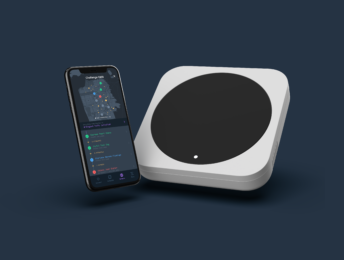 Helium has announced the European launch of its Helium Hotspots. The business, which was co-founded by Helium CEO Amir Haleem and Napster’s Shawn Fanning, has seen exponential uptake of its devices in North America and creating ‘The People’s Network’ across more than 1,000 cities.
Helium has announced the European launch of its Helium Hotspots. The business, which was co-founded by Helium CEO Amir Haleem and Napster’s Shawn Fanning, has seen exponential uptake of its devices in North America and creating ‘The People’s Network’ across more than 1,000 cities.
The Hotspot, it is claimed, lets people to own and operate a wireless network that will support the Internet of Things (IoT) technology surrounding them. The technology supports both smart home and IoT devices from smart pet collars and home delivery systems, to smart bikes and scooters, medical transport and tracking devices, cooling systems, smart lighting systems, and more, it is claimed.
The People’s Network, which is created by Hotspots, moves data over extremely long distances to Helium’s open-source “LongFi” technology. LongFi, which is a package of LoRaWAN protocol and the Helium blockchain, lets IoT devices to transmit data 200 times further than WiFi for a fraction of standard mobile costs, simplifies the process to connect devices to the Internet, and rewards owners for becoming part of The People’s Network. That’s the claim.
Amir Haleem, Helium’s CEO and co-founder said: ““Now anyone in Europe can own part of a wireless network that they, and their community, relies on – and help create a world where devices like smart pet collars or smart bikes and scooters don’t need a mobile contract to function. We’re thrilled with the exponential growth we’ve seen in North America, and are excited to bring the power of The People’s Network to Europe.”
Michael Giuffre, General Manager of Aerostat, a Helium Patron group based in Boston, Massachusetts, said: “Building the Helium Network on the Patron level was initially about creating coverage. But as we’ve expanded our efforts alongside the Helium team and others in the community, we’re spending more time looking for ways to put devices on the Network. Recently we signed a deal with a major commercial real estate group to deploy coverage and environmental sensing for their buildings. We see this type of deployment as the future.”
It costs EU £450/€450 now the euro and the pound sterling are on a par.





